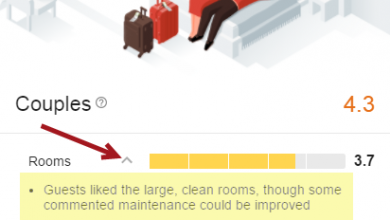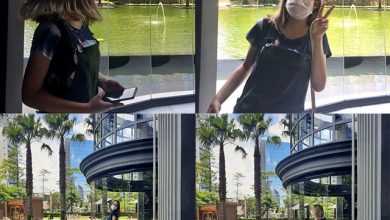Landing Page Classification -SEO Guide

Too many Web marketers treat Google as the only [meaningful] source of traffic for their sites. Your inability to earn traffic from other sources is an opportunity to improve your marketing. Your decision to ignore other sources of traffic should be supported by reliable information (not “data” – information).
The more I discuss analytics with clients and peers in the industry, the more strongly I feel that people are becoming hyperfocused on specific needs for landing pages. I find this ironic because for years I worked hard to convince people that any page on a Website could act as a landing page. Now that everyone generally accepts this as an axiom of Web marketing, they seem to have forgotten the obverse rule: that one need not make every page into a landing page.
Gated content lies outside the domain of “landing pages”, and gated content may be used to generate revenues or measure the effectiveness of marketing campaigns. It might be used for something else entirely. But for some reason, people don’t think about Virtually Gated Content in the same way.
Virtually Gated Content may be indexed by search engines, shared on social media, promoted by advertising, or otherwise “broadcast” to the Internet. However, for numerous possible reasons, the Virtually Gated Content rarely (if ever) acts like a landing page. People tend to reach it from site-internal references.
I think it’s useful – even necessary – to categorize content according to its place on the landing page map.
- Primary Landing Pages
- Secondary Landing Pages
- Site Internal Landing Pages
- Advertising Landing Pages
- Non-landing pages
In my opinion, a primary landing page is one where visitors arrive for the reasons you desire from the off-site sources you prefer. A secondary landing page is one where visitors arrive for incidental (lower-priority or zero-priority) reasons and/or from off-site sources you’re not interested in. If a page fits into both categories, then it’s just a primary landing page.
Site-internal landing pages are created for site search, or as gated content. They may also supplement primary landing pages, such as the paginated portions of an article split across multiple URLs. A site-internal landing page might receive incidental traffic from search and social sources – but it’s not intentional traffic.
Advertising landing pages are usually blocked from search engine crawling and indexing. They might be used for multiple advertising campaigns (PPC in search + boosted social media + direct advertising on other sites) or they might be used only for site-internal advertising.
Anything else is a non-landing page. It’s very unlikely to receive off-site referrals in any reasonable period of time. Deeply paginated archive index pages on blogs are good examples. People tend to visit them by following links on the blogs.
Non-landing pages should serve a useful purpose. They need not be visited by people. They can be the glue that binds a site together, or they can publish supplemental information that people only need on an occasional basis.
Traffic Analysis Should Differentiate between Page Roles
In my experience, many (I believe most) Web marketers and business decision makers focus either on Organic/Paid Search Referrals OR on Channels/Sources. They may express more interest in total traffic than traffic by page role or secondary sources.
If you’re not looking at the Landing Page reports in your analytics tools, you should be. But you should also differentiate between the sources:
- Bing + Landing Page
- Facebook + Landing Page
- Google + Landing Page
- Instagram + Landing Page
- LinkedIn + Landing Page
- Pinterest + Landing Page
- Site Search + Landing Page
- Twitter + Landing Page
Site internal page + non-Landing Page
And you should also look at pages by their traffic sources.
- Page + Bing
- Page + Facebook
- Page + Google
- Page + Instagram
- Page + LinkedIn
- Page + Pinterest
- Page + Site Search
- Page + Twitter
- Page + [same host or domain]
The relationships you define matter. The relationships you analyze matter. You’re missing a big part of the picture if you only look at Source/Medium in Google Analytics, only look at Queries in Search Console, only look at Page Views by Page, etc.
Before You Delete Low-traffic Pages …
One of the most critical decisions an SEO specialist makes when auditing a Website is whether low-traffic pages should be deleted, moved, merged into other content, replaced, updated, or simply redirected elsewhere. Most of the time when people tell me how they reached their decision, they indicate they only performed a limited analysis.
If you’re talking about removing or changing 100 pages, I think you should look at every one of them and understand thoroughly why it exists. If you’re talking about 1,000s of pages then, yes, you’ll need to make some assumptions. You could ask a team of people to do the page-level analysis, but that will be expensive.
Removing a page from a Website alters its structure. On a blog, or any type of site with a pageinated design – deleting or merging content changes the site infrastructure. Noindexing pages changes the flow of PageRank through the site. Regardless of what you do, you should be looking at much more than just how many visitors a given page receives or why they go there.
There Are Also Conditional Landing Pages
A landing page might be seasonal, contingent upon a specific campaign, propelled into relevance by a major news story, or it could become a viral sensation.
There are times, when writing gambling articles, I’ve looked up casino financial reports, slot machine specifications, and other technical data that most likely rarely receives any search referral traffic. I have no idea of why some technical information is published on the Internet, but when I need it I’m glad it’s there if I can find it.
Some information is required by law. The publisher may not care or intend for anyone to find it, except by following links on their site. But people search for it anyway. Or it’s shared on social media, or linked to from other sites. Links from non-search/non-social/non-advertising sources are the highest source of secondary landing page traffic. They are almost always earned because Web marketers usually only build links for primary landing pages.
If you’re building links for the sake of channeling PageRank-like value to a site (and this technically violates search engine guidelines if you’re paying for the links), then pointing at least some of those links to lower-priority pages (pages you don’t intend to rank for anything on Bing or Google, pages you don’t share on social media, pages you don’t buy advertising for, etc.) helps spread PageRank farther and deeper into your site.
If you’re auditing a site with the intention of removing or redirecting content, and you find “deep” (non-ranking) low-traffic pages with links pointing to them, you should ask yourself if those pages are helping spread PageRank through the site. Probably fewer than 1% of Web marketers would set up something like this, unless they’re using a shotgun link-building strategy (linking to as many pages on the site as possible).
Harvest Secondary Landing Pages
When you’re not sure what queries a site should be targeting, or if you’re looking for new opportunities, you may find some good keywords to target with (revised or replaced) secondary landing pages.
The keywords may already be driving incidental traffic to those pages. They could be ranking in the 21-40 positions for these keywords, which may have moderate to high impression levels. If the page wasn’t designed to rank for anything – or if it was produced before the SEO specialist or decision-maker had sufficient experience and knowledge to pick good optimization targets – then it may benefit from being rebuilt, revised, or slightly tweaked.
By the same token, if site search or internal link references (the “user journey”) indicate that people are seeking out a page that receives little to no off-site referrals, maybe it’s a good candidate to promote to a primary landing page for one or more sources or campaigns. That’s not always feasible or necessary, but it’s an option to consider when you run across deep content that receives a lot of same-site referral traffic.
Conclusion
There’s no such thing as “just a landing page”. Every landing page plays a role – maybe more than one role – in your marketing regardless of what you intend. It’s natural for pages to attract random, sometimes intense-but-unexpected traffic. You should be prepared to pivot toward good traffic, but also to tolerate traffic that doesn’t make any sense to you on first glance.
If you dig deeper into the data and find that the traffic exists for a reason (it’s not faked by bots or a random viral spike), then you have an opportunity to look for creative ways to leverage that content.
You can leave things as they are for lack of inspiration. But you should be very careful about pulling content without having a good reason to do so. It may not be bringing in tons of Google traffic, but it could still be serving a purpose. And even if that purpose is only to spread PageRank to other parts of the site, that’s still an important role for a (non-landing) page.
Related
#Landing #Page #Classification





